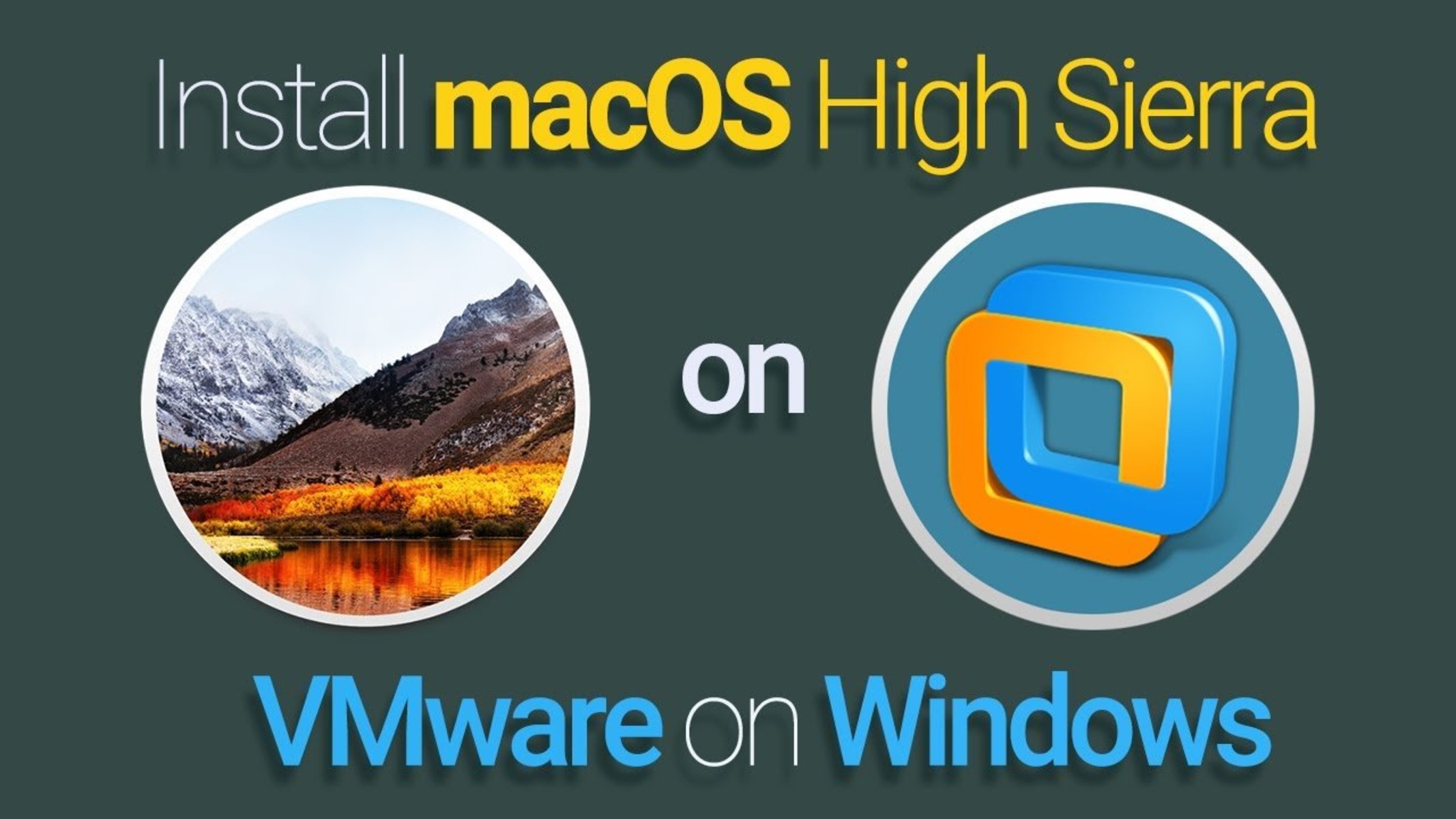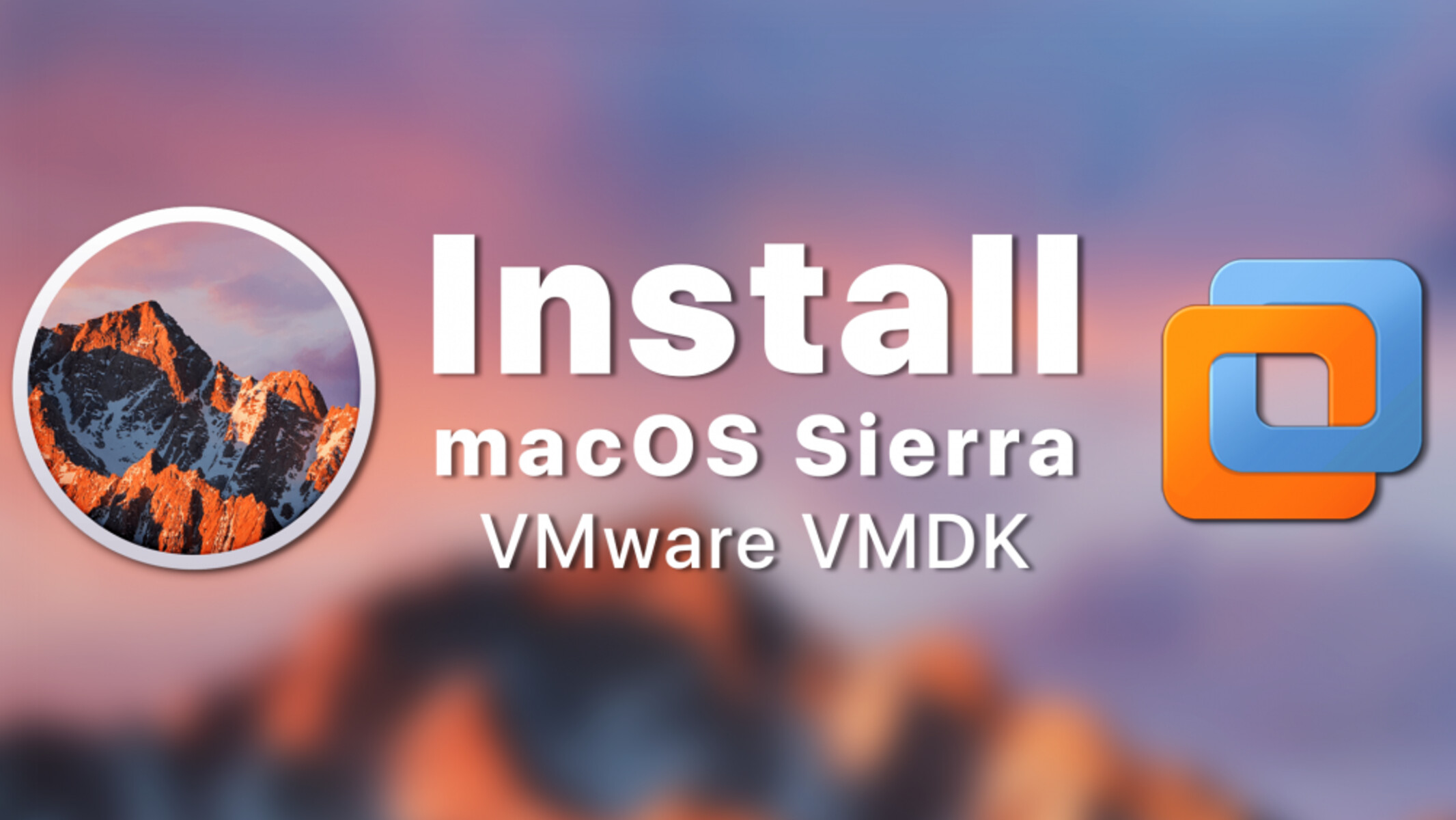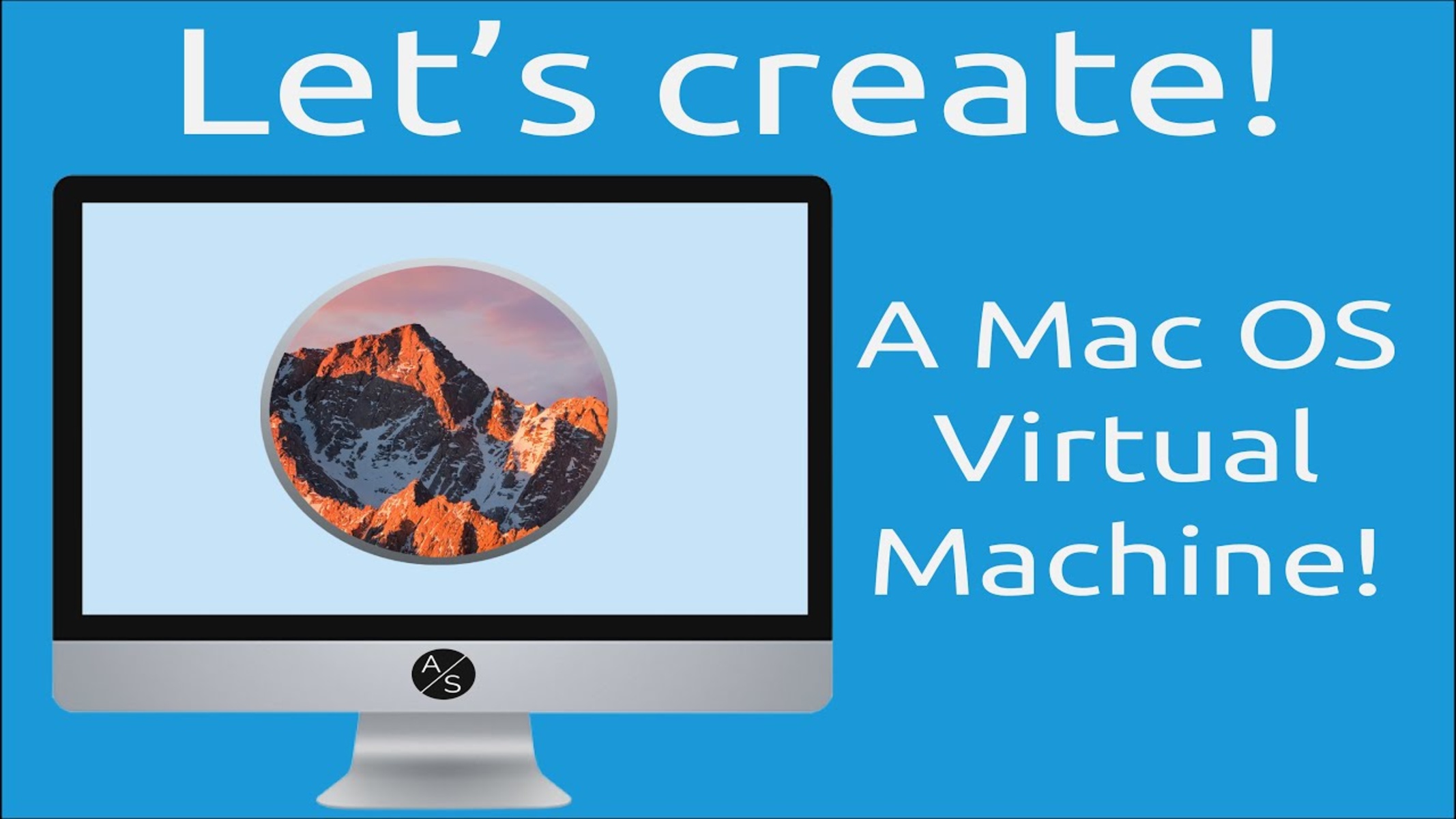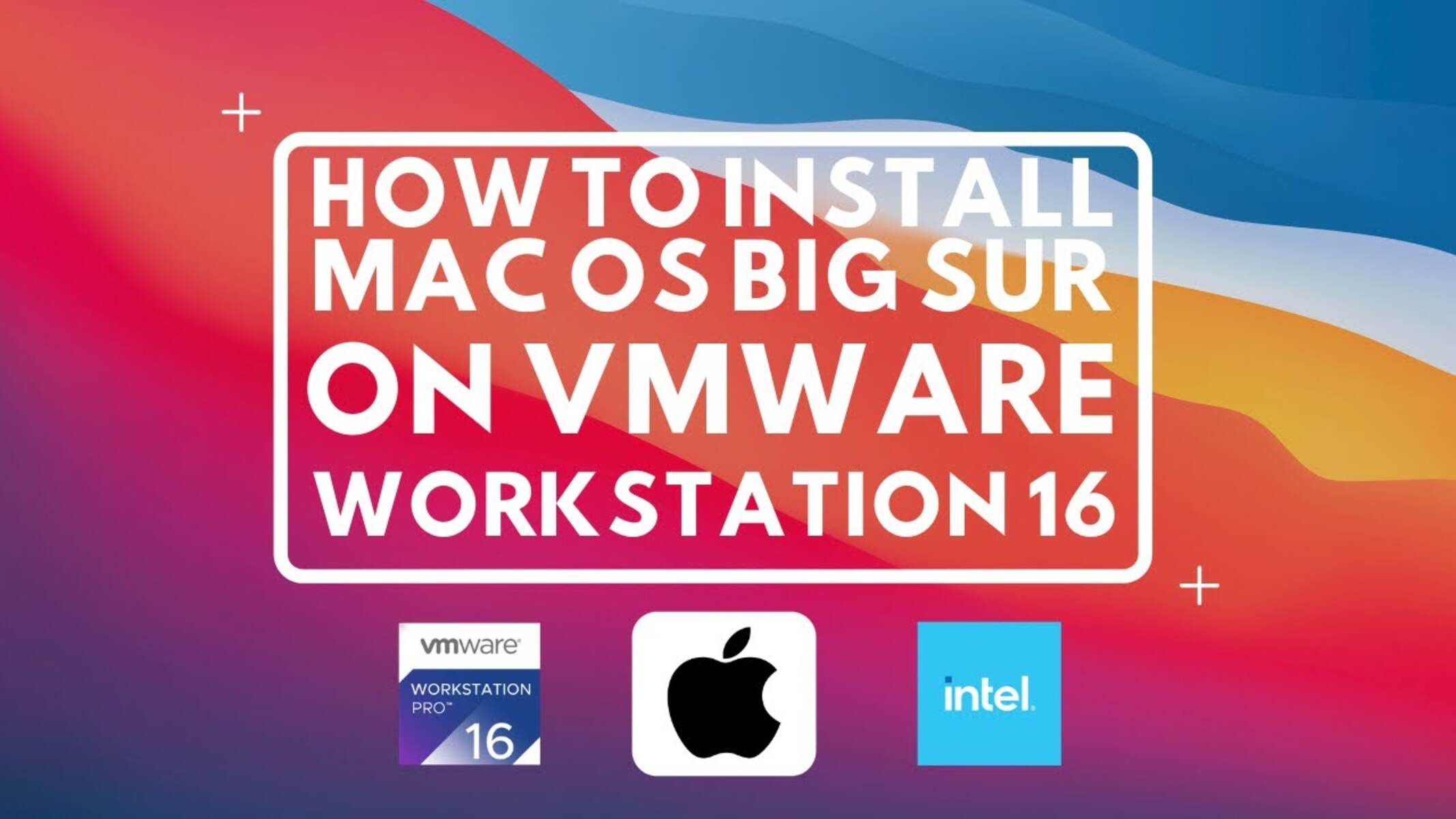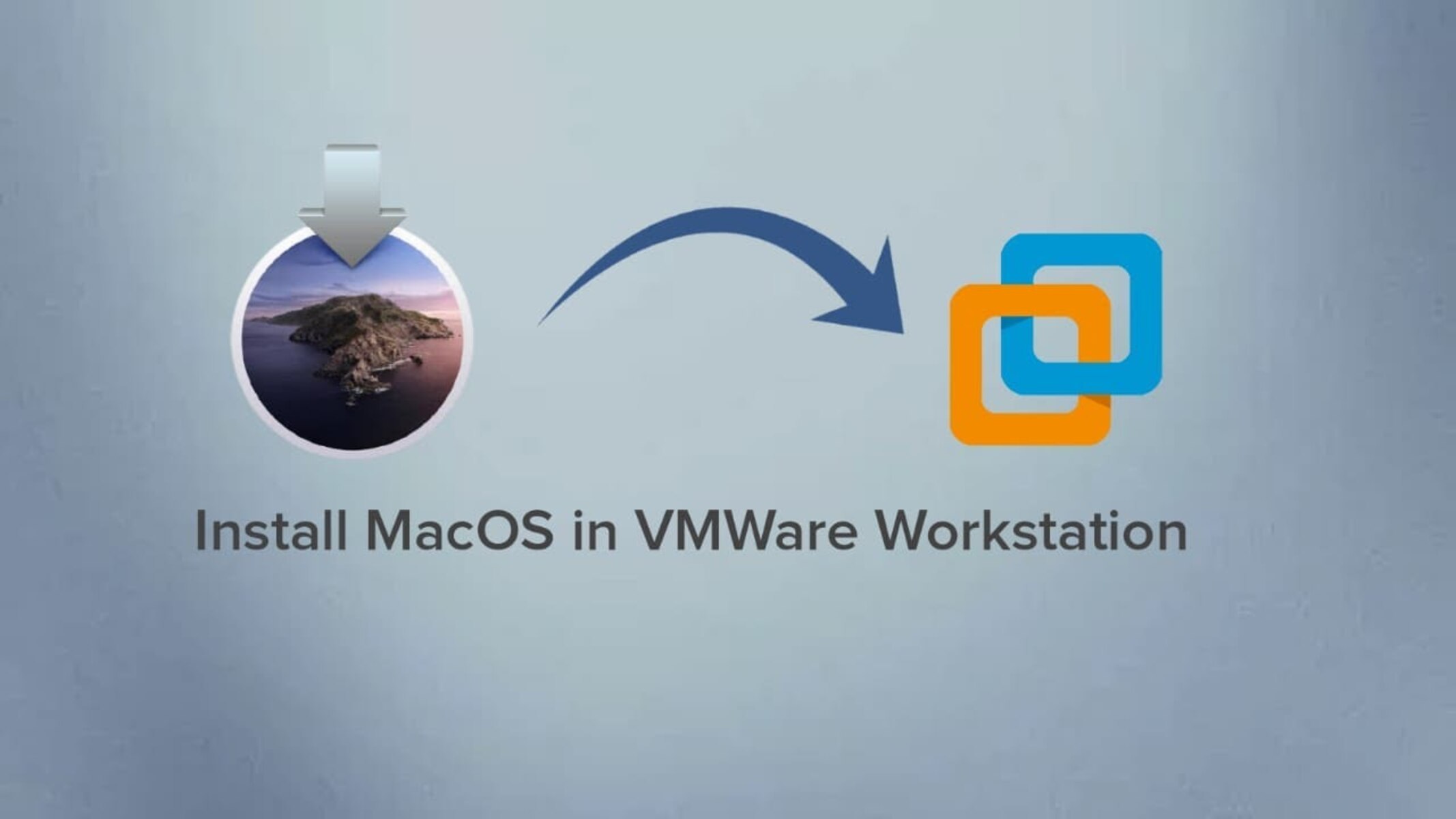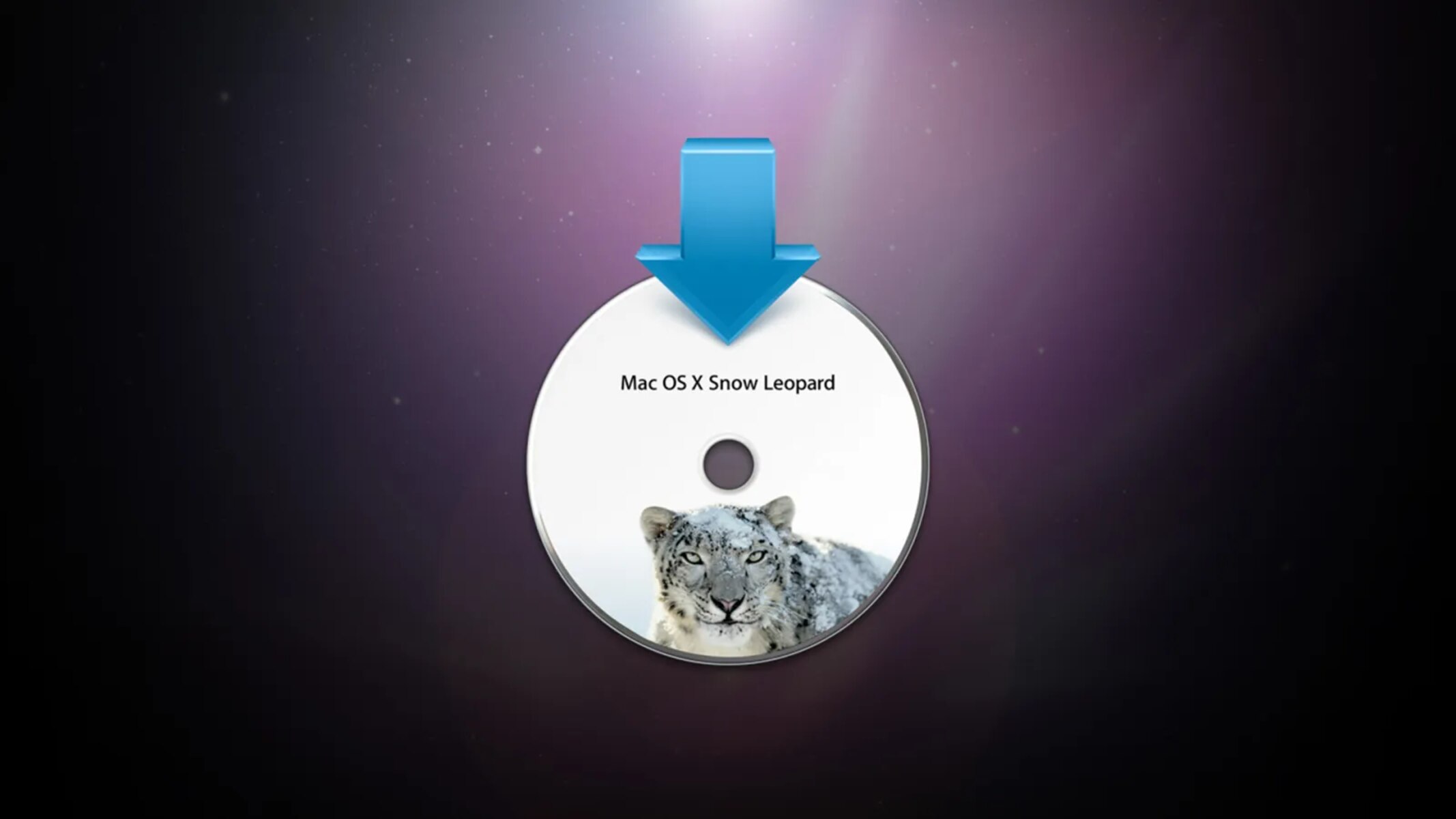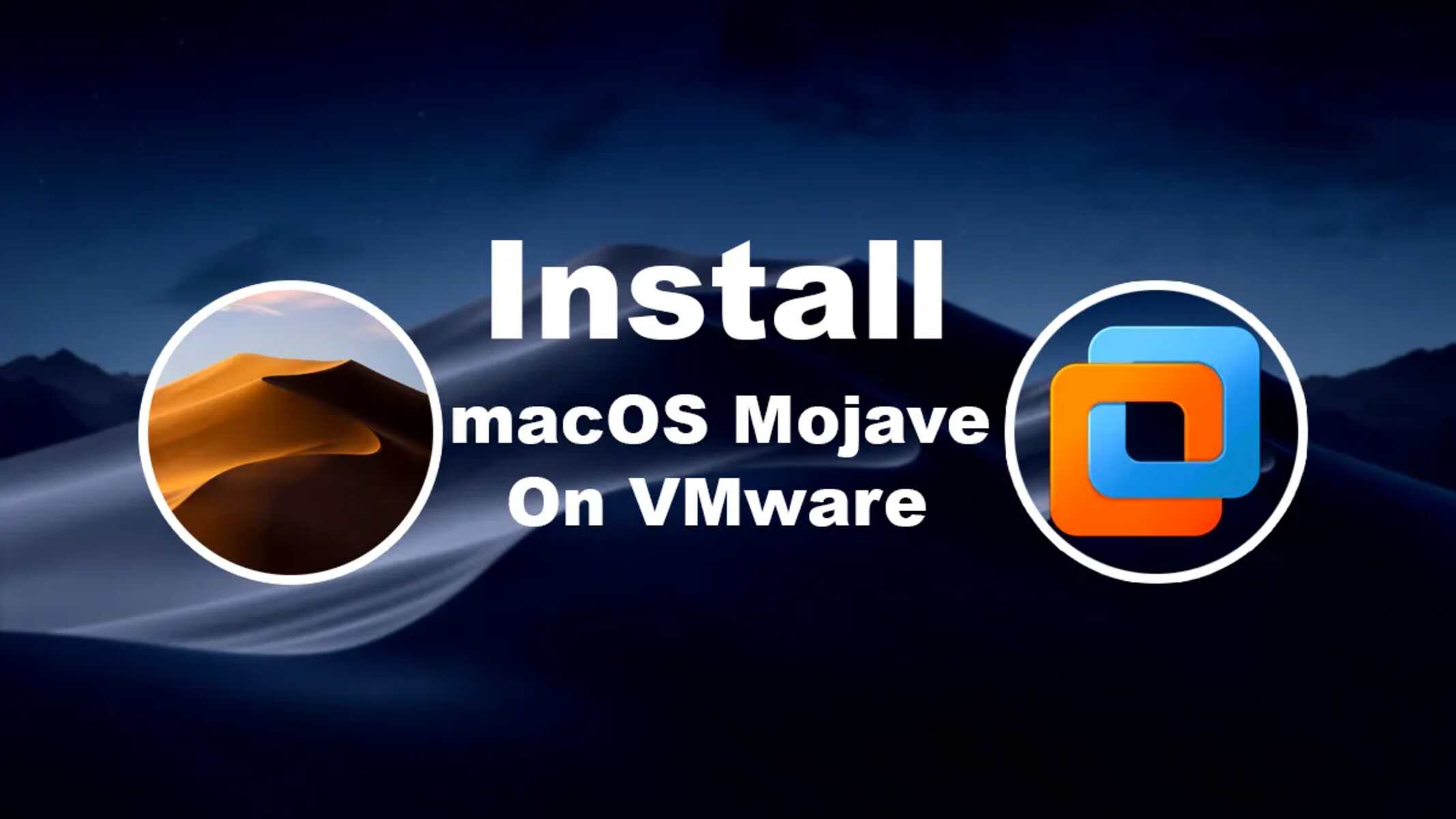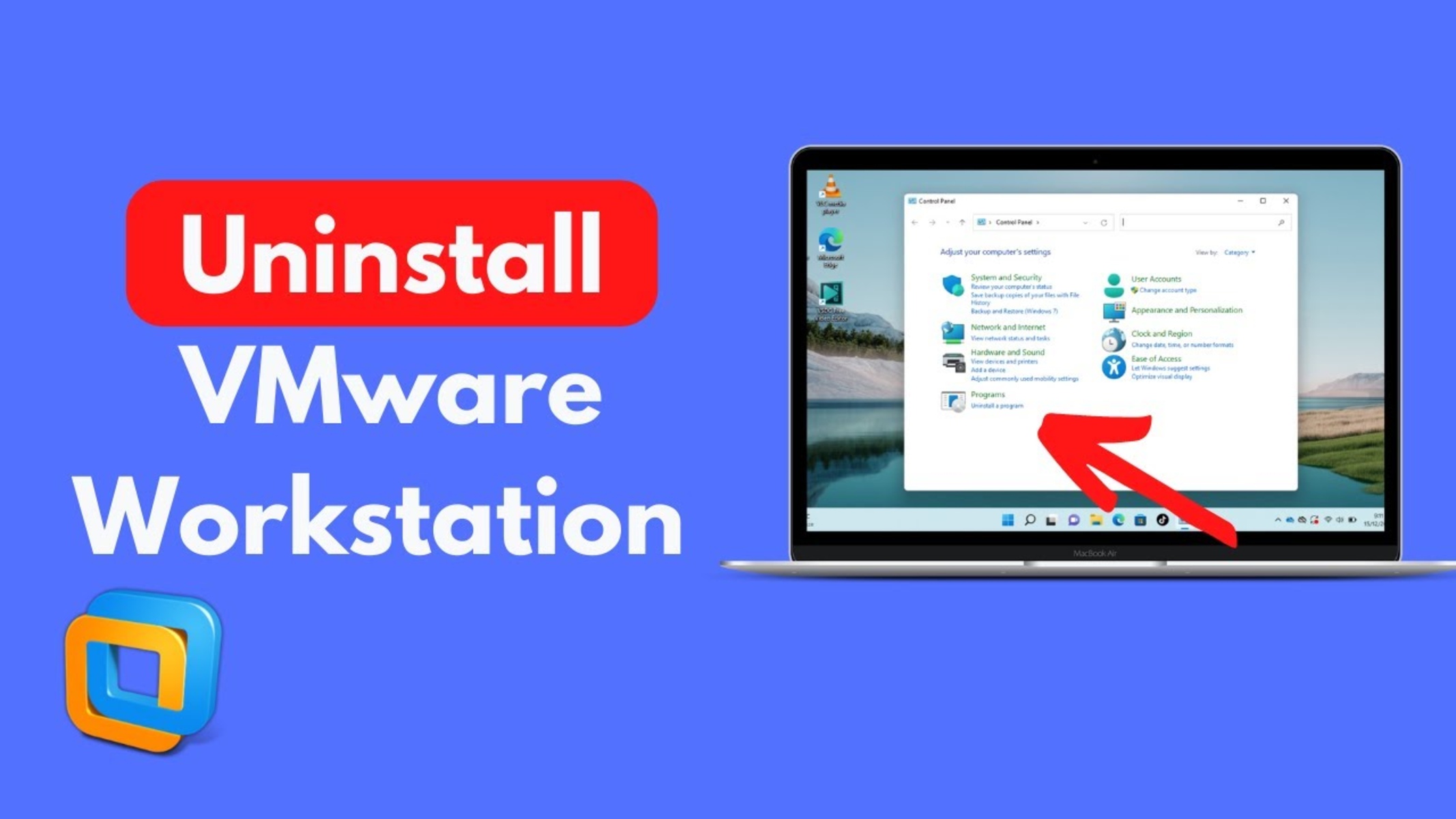Introduction
Are you a Windows user who is curious about exploring the world of macOS? With the advancements in virtualization technology, it is now possible to install macOS Sierra on your Windows computer using VMware Workstation. This allows you to experience the features and functionalities of macOS without having to invest in a separate Apple device.
In this guide, we will walk you through the step-by-step process of installing macOS Sierra on Windows using VMware Workstation. We will cover everything from downloading the macOS Sierra installer to configuring the virtual machine and troubleshooting common issues.
By following this guide, you will be able to create a virtualized macOS environment on your Windows PC, enabling you to run macOS applications, test software compatibility, or simply satisfy your curiosity about Apple’s operating system.
Before we begin, it’s important to note that installing macOS on non-Apple hardware is a violation of Apple’s licensing agreement. Therefore, this guide is intended for educational purposes and should not be used for commercial or production purposes. Additionally, ensure that your computer meets the minimum system requirements to run VMware Workstation and macOS Sierra smoothly.
So, if you’re ready to dive into the world of macOS Sierra on your Windows computer, let’s get started!
Prerequisites
Before you begin the installation process, make sure you have the following prerequisites in place:
1. A Windows computer: You’ll need a compatible Windows computer with at least 4GB of RAM and a processor with virtualization support.
2. VMware Workstation: Download and install the latest version of VMware Workstation on your Windows computer. You can get it from the official VMware website.
3. macOS Sierra installer: Download the macOS Sierra installer from the Apple App Store. Make sure you have a reliable and high-speed internet connection to ensure a smooth download process.
4. Sufficient storage space: Ensure that you have enough free disk space on your computer to accommodate the macOS Sierra installer and the virtual machine.
5. A valid VMware Workstation license: While VMware Workstation offers a 30-day free trial, you will need a valid license to continue using it after the trial period expires.
6. Basic understanding of virtualization: Familiarize yourself with the basics of virtualization and how it works. This will help you navigate the installation process more effectively.
7. Patience and persistence: Installing macOS on a Windows computer using virtualization can sometimes be a complex process. Be prepared to troubleshoot and overcome any issues that may arise during the installation.
With these prerequisites in place, you’re now ready to begin the installation process. Take the time to gather all the necessary resources and ensure that you have a clear understanding of the steps involved. Once you have everything ready, you can move on to the next section and start installing macOS Sierra on your Windows computer using VMware Workstation.
Step 1: Download macOS Sierra Installer
To install macOS Sierra on your Windows computer using VMware Workstation, you will first need to download the macOS Sierra installer. Follow these steps to obtain the installer:
1. Open the App Store: Launch the App Store application on your Apple computer or device. If you don’t have an Apple computer, you can use a virtual machine running macOS or ask a friend who has one.
2. Search for macOS Sierra: In the search bar located at the top right corner of the App Store, type in “macOS Sierra” and press Enter. Click on the macOS Sierra installer from the search results.
3. Download the installer: Once you’re on the macOS Sierra page, click on the “Download” button. The installer file will begin downloading. This process may take some time, depending on the speed of your internet connection.
4. Keep the installer in the Applications folder: After the download is complete, you will find the macOS Sierra installer in your Applications folder. Do not move or delete the installer file, as you will need it for the installation process.
Now that you have successfully downloaded the macOS Sierra installer, you’re ready to move on to the next step. In the following section, we will guide you through the process of creating a new virtual machine in VMware Workstation.
Step 2: Create a New Virtual Machine in VMware Workstation
Once you have downloaded the macOS Sierra installer, the next step is to create a new virtual machine in VMware Workstation. Follow these steps to set up the virtual machine:
1. Launch VMware Workstation: Open VMware Workstation on your Windows computer. If you haven’t installed it yet, make sure to do so before proceeding.
2. Click on “Create a New Virtual Machine”: From the VMware Workstation home screen, click on the “Create a New Virtual Machine” option. This will start the virtual machine creation wizard.
3. Select “Custom (Advanced)” configuration: In the virtual machine creation wizard, choose the “Custom (Advanced)” option and click “Next” to continue.
4. Choose the macOS Sierra installer: On the next screen, select the “I will install the operating system later” option and click “Next”. From the Guest Operating System selection, choose “Apple Mac OS X” and from the Version drop-down menu, select “macOS 10.12” (or later if applicable).
5. Set the virtual machine name and location: Specify a name for your virtual machine and choose a location to store the virtual machine files.
6. Specify the disk capacity: Set the disk capacity for your virtual machine. A minimum of 40 GB is recommended to ensure sufficient space for the macOS installation and any applications or files you plan to work with.
7. Customize the hardware settings: In this step, you can customize the hardware settings of your virtual machine. Ensure that you allocate enough RAM, CPU cores, and network settings based on your system resources and requirements. It is recommended to allocate at least 2 GB of RAM.
8. Adjust other settings: Review and adjust any other settings as necessary, such as the display resolution, USB compatibility, and sound settings.
9. Click “Finish” to create the virtual machine: Once you have configured the virtual machine settings, click “Finish” to create the virtual machine.
Congratulations! You have successfully created a new virtual machine in VMware Workstation. In the next step, we will guide you through editing the virtual machine settings to optimize it for macOS Sierra.
Step 3: Edit Virtual Machine Settings
After creating a new virtual machine in VMware Workstation, the next step is to edit the virtual machine settings to optimize it for macOS Sierra. Follow these steps to configure the virtual machine settings:
1. Select the virtual machine: In VMware Workstation, locate the virtual machine you just created in the left panel under “My Computer” or “VMware Workstation.” Click on the virtual machine to select it.
2. Click on “Edit virtual machine settings”: With the virtual machine selected, click on the “Edit virtual machine settings” option located in the toolbar or navigate to “VM” > “Settings” from the VMware Workstation menu.
3. Adjust the memory settings: In the “Memory” tab, adjust the memory allocation for the virtual machine. It is recommended to allocate at least 4 GB of RAM to ensure smooth performance. Remember, allocating too much memory may impact the overall performance of your host operating system.
4. Configure the processor settings: In the “Processors” tab, configure the processor settings for the virtual machine. Increase the number of processors if your system can handle it, but be cautious not to allocate all of the available cores to avoid affecting the performance of the host machine.
5. Enable virtualization technology: In the “Processors” tab, make sure to check the “Virtualize Intel VT-x/EPT or AMD-V/RVI” option. This ensures that virtualization technology is enabled for optimal performance.
6. Adjust other settings as needed: Explore the other tabs, such as “Display,” “Network Adapter,” and “Sound Card,” to adjust settings based on your preferences and requirements. For networking, make sure to select the appropriate adapter and configure the network settings to enable internet connectivity in the virtual machine.
7. Apply the changes and close the settings window: Once you have made the necessary adjustments, click “OK” to apply the changes and close the virtual machine settings window.
By editing the virtual machine settings, you have optimized the configuration of the virtual machine to ensure a smooth experience with macOS Sierra. In the next step, we will guide you through unlocking VMware Workstation to support macOS.
Step 4: Unlock VMware Workstation to Support macOS
By default, VMware Workstation does not officially support running macOS. However, there are ways to unlock VMware Workstation to enable macOS compatibility. Follow these steps to unlock VMware Workstation:
1. Navigate to the VMware unlocker: Download the macOS unlocker for VMware Workstation from the official GitHub repository. This unlocker is a set of files that modifies VMware binaries to allow macOS to run.
2. Close VMware Workstation: Before proceeding with the unlocker, make sure to close VMware Workstation completely.
3. Extract the unlocker files: Once the unlocker has been downloaded, extract the contents of the ZIP file to a convenient location on your computer.
4. Run the unlocker: Open the extracted unlocker folder and run the “win-install” or “install.cmd” file (depending on the version of the unlocker). This will execute the unlocker script and make the necessary modifications to VMware Workstation.
5. Provide administrator privileges: When prompted, provide administrator privileges to allow the unlocker to make the required changes to VMware Workstation.
6. Verify the unlocker installation: After the unlocker script has finished running, ensure that there are no errors reported. This indicates that the unlocker has been successfully installed.
7. Open VMware Workstation: Launch VMware Workstation again.
By following these steps, you have successfully unlocked VMware Workstation to support macOS. The next step involves adding the necessary code to the virtual machine configuration file in order to enable macOS compatibility.
Step 5: Add the Necessary Code to the Virtual Machine Configuration File
In order to enable macOS compatibility in VMware Workstation, you need to add some additional code to the virtual machine configuration file. Follow these steps to add the necessary code:
1. Locate the virtual machine configuration file: Navigate to the location where you saved the virtual machine files. Find the folder with the same name as your virtual machine and look for the virtual machine configuration file with a “.vmx” extension.
2. Open the virtual machine configuration file: Right-click on the “.vmx” file and open it with a text editor of your choice, such as Notepad or Notepad++.
3. Add the necessary code: Scroll to the bottom of the configuration file and add the following lines of code:
text
smc.version = “0”
cpuid.1.eax = “0000:0000:0000:0000:0000:0000:0000:1011”
cpuid.1.ecx = “0111:0101:0110:1110:0110:0101:0100:0111”
cpuid.1.edx = “0100:1001:0110:0101:0110:1110:0110:1001”
smbios.reflectHost = “TRUE”
This code ensures that the virtual machine is identified as a Mac and allows macOS to run on it.
4. Save the configuration file: After adding the code, save the changes to the virtual machine configuration file and close the text editor.
By adding the necessary code to the virtual machine configuration file, you have made the required modifications to enable macOS compatibility. In the next step, we will guide you through the process of installing macOS Sierra on the virtual machine.
Step 6: Install macOS Sierra on the Virtual Machine
Now that you have completed the necessary preparations, it’s time to install macOS Sierra on the virtual machine created in VMware Workstation. Follow these steps to install macOS Sierra:
1. Launch VMware Workstation: Open VMware Workstation on your Windows computer.
2. Start the virtual machine: In the VMware Workstation home screen, select the macOS Sierra virtual machine from the list and click on the “Play virtual machine” button.
3. Select the macOS Sierra installer: In the virtual machine, you will be prompted to choose the startup disk. Select the macOS Sierra installer file (the downloaded macOS Sierra installer).
4. Begin the installation process: Once you have selected the macOS Sierra installer, click on the “Continue” button to start the installation process.
5. Agree to the terms and conditions: Read and accept the terms and conditions presented to proceed with the installation.
6. Choose the installation destination: Select the destination location for the installation. By default, you should choose the main virtual machine hard drive.
7. Customize the installation options (optional): If you wish to customize the installation options, you can click on the “Customize” button. This allows you to select specific components or features to install. If you prefer the default options, you can skip this step.
8. Begin the installation: After customizing the installation options (if applicable), click on the “Install” button to start the macOS Sierra installation.
9. Wait for the installation to complete: The installation process may take some time, so be patient and wait for it to finish.
10. Set up macOS Sierra: Once the installation is complete, the virtual machine will restart, and you will be guided through the initial macOS setup process. Follow the on-screen instructions to set up macOS Sierra according to your preferences.
After completing these steps, you will have successfully installed macOS Sierra on the virtual machine. In the following section, we will discuss how to enhance the functionality of the virtual machine by installing VMware Tools.
Step 7: Install VMware Tools to Enhance Functionality
After installing macOS Sierra on the virtual machine, the next step is to install VMware Tools. VMware Tools is a set of drivers and utilities that enhances the performance and functionality of the virtual machine. Follow these steps to install VMware Tools:
1. Start the virtual machine: Launch the virtual machine with macOS Sierra installed in VMware Workstation.
2. Log in to macOS Sierra: Once the virtual machine is started, log in to macOS Sierra using your credentials.
3. Click on “Player” in the VMware Workstation menu: In the VMware Workstation menu, click on “Player” and select “Manage” from the drop-down menu.
4. Select “Install VMware Tools”: From the “Manage” menu, click on “Install VMware Tools.” This will mount the VMware Tools installation disk image in macOS Sierra.
5. Open the VMware Tools disk image: Once the installation disk image is mounted, you will see it appear on the desktop of macOS Sierra. Double-click on it to open the disk image.
6. Run the VMware Tools installer: In the VMware Tools disk image, locate the “VMware Tools.app” or “VMware Tools.pkg” file and double-click on it to run the installer.
7. Follow the installer prompts: The VMware Tools installer will walk you through the installation process. Click “Continue” and follow the on-screen instructions to proceed.
8. Authenticate the installation: During the installation process, you may be prompted to provide your administrator credentials to authenticate the installation. Provide the required information to continue.
9. Complete the installation process: Once the installation is finished, click on the “Finish” button to complete the VMware Tools installation.
10. Restart the virtual machine: After the installation is complete, restart the virtual machine to apply the changes.
By installing VMware Tools, you will have enhanced the performance and functionality of the macOS Sierra virtual machine. VMware Tools provides features such as improved graphics, better mouse and keyboard integration, and optimized network performance. With VMware Tools installed, you can now enjoy a smoother and more seamless experience while using macOS Sierra on your Windows computer.
In the next section, we will discuss some common issues that you might encounter during the installation process and provide troubleshooting tips.
Step 8: Troubleshooting Common Issues
While installing macOS Sierra on a virtual machine using VMware Workstation can be a relatively straightforward process, you may encounter some common issues along the way. Here are a few troubleshooting tips to help address these issues:
1. Virtualization Technology: Ensure that virtualization technology (VT-x/AMD-V) is enabled in your computer’s BIOS settings. Without this feature enabled, macOS may not work properly or may not even boot.
2. Invalid macOS Installer: If you receive an error during the macOS Sierra installation process, it may be due to an invalid installer. Re-download the macOS Sierra installer from the App Store to ensure you have a complete and error-free installation file.
3. Hardware Compatibility: Verify that your computer meets the minimum system requirements to run macOS Sierra on the virtual machine. Check the CPU, RAM, and disk space requirements to ensure compatibility.
4. VMware Workstation Version: Make sure you are using the latest version of VMware Workstation. Older versions may not be fully compatible with macOS or may not have the necessary updates for smooth operation.
5. Virtual Machine Settings: Double-check your virtual machine settings, such as the allocated RAM, CPU cores, and network adapter type. Incorrect settings can cause performance issues or compatibility problems.
6. Correct VMX Configuration: Ensure that you have added the necessary code to the virtual machine configuration file as mentioned in Step 5. Mistakes or improper formatting in the code can prevent macOS from running or cause instability.
7. Reinstall VMware Tools: If you experience issues with mouse and keyboard integration or graphics performance, reinstall VMware Tools. Sometimes, the initial installation may not be successful or may require an additional installation attempt.
8. Free Up Disk Space: If you encounter disk space-related errors during the installation, ensure that you have sufficient free disk space on both your host machine and the virtual machine’s hard drive.
9. Error Messages: Pay close attention to any error messages you encounter during the installation process. These messages can provide clues and help you identify the specific issue you are facing. Perform an online search or consult relevant forums for troubleshooting advice related to the specific error message.
10. Seek Assistance: If you are unable to resolve the issues on your own, consider seeking assistance from online forums or support communities where experienced users can provide guidance and solutions.
By following these troubleshooting tips, you can overcome common issues that may arise during the installation of macOS Sierra on the virtual machine.
Conclusion
Congratulations! You have successfully learned how to install macOS Sierra on a Windows computer using VMware Workstation. This opens up a whole new world of possibilities, allowing you to experience the features and functionalities of macOS without the need for a dedicated Apple device.
Throughout this guide, we covered the step-by-step process, starting from downloading the macOS Sierra installer to configuring the virtual machine in VMware Workstation. We also addressed common issues you may encounter and provided troubleshooting tips to help you overcome them.
By following the installation process, you have created a virtualized macOS environment on your Windows PC. This allows you to run macOS applications, test software compatibility, or simply explore the world of Apple’s operating system.
However, it is essential to remember that installing macOS on non-Apple hardware violates Apple’s licensing agreement. Therefore, the installation process outlined in this guide is for educational purposes only and should not be used for commercial or production purposes.
Keep in mind that virtualized environments might have limitations and performance differences compared to native installations. Factors such as available system resources and hardware compatibility can affect the performance of macOS on a virtual machine.
If you encounter any issues during the installation or while using macOS Sierra on the virtual machine, don’t hesitate to seek assistance from online forums or communities dedicated to macOS virtualization.
Now that you have macOS Sierra running on your Windows computer, you can enjoy the benefits of both operating systems in one environment. Whether you want to explore macOS-exclusive software, develop for the iOS platform, or simply experience a different operating system, this guide has provided you with the necessary steps to make it happen.
Have fun exploring macOS Sierra on your Windows computer, and happy virtualization!







